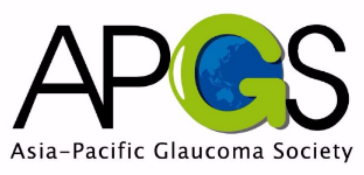Tribute to Prof. Anthony Molteno by Ivan Goldberg
Tony Molteno made magnificent contributions to Ophthalmology and in particular to glaucoma management. His innovations saved the sight of countless patients otherwise destined to darkness and opened new avenues for surgery and wound healing modulation that continue to evolve today.
As a South African medical graduate in the 1960s, Tony’s ophthalmic career rapidly encountered aggressive glaucoma in younger patients with advanced visual damage, unable to be controlled by the current treatment approaches. Methodically and innovatively, he explored various surgical options to try to improve intra-ocular pressure control where trabeculectomy offered poor results, along with ways to modify wound healing so as to prevent scarring and thus aqueous drainage failure.
By the time he moved to New Zealand, he had begun work on a plastic tube that drained aqueous onto a plastic plate, thereby providing sure egress from the anterior chamber to a sub-conjunctival or sub-Tenon’s reservoir from which aqueous could be absorbed into the lymphatic system and the blood stream.
Optimizing the drainage device’s chemical composition for biological inertness, its size and shape and then post-operative medical control of induced inflammation, all to achieve “just-right” drainage rates, took years of careful laboratory and clinical study. Streamlining the surgical techniques required disciplined investigations as well.
Then came the dissemination of that knowledge in peer-reviewed publications and a string of lectures around the world. Tony was an entertaining speaker, enthusing his audience with his knowledge and skills.
I met Tony in 1984, when he came to Sydney at our invitation to teach Fred Hollows and me how to insert his two-plate glaucoma implant and how to manage our patients before, during and after the surgery.
The skills and knowledge he imparted allowed ophthalmologists globally to save the sight of innumerable patients. That meant and continues to mean an enormous amount to me, as well as to so many of my patients who benefitted.
He was a wonderful teacher, a great lateral and innovative thinker and a fabulous all-round human being. As a direct result of his work, Tony is held in the highest regard by colleagues and patients everywhere. His truly was “a Life well lived”.
Prof A.C.B Molteno by Paul Healey
I first met Tony Molteno as many of us did at the time, at the Dunedin Basic Science Course for young doctors interested in Ophthalmology. Set in the depths of a freezing winter, the stunning landscape of New Zealand’s South Island was the only distraction from lectures and studying. Tony’s lectures however were a distraction in themselves. From anatomy, to physiology and to optics, Tony’s clear explanations and enthusiastic delivery made the confusing descriptions in our textbooks suddenly simple and clear. “KISS” he would remonstrate in response to our confusion; “Keep it Simple, Stupid!”
One could not help feeling a little stupid in the presence of Tony, a true polymath whose insight came from his own unique way of seeing questions and answers. Once, in the middle of an optics lecture, the entire class was summoned to the roof of the building to demonstrate the principles of the telescope. Later that week we were summoned again, but this time to his own home where his wife Tess hosted a convivial evening and Tony showed us the many telescopes he had made himself.
Such was the generosity of this giant of ophthalmology, but such also was his humility that there are still many in the world who do not fully understand the years of ground-breaking work that lead to the development of the first modern glaucoma drainage device, nor how he helped others develop their own versions of his device. Nor do they know that Tony invented the first antifibrotic treatment with prednisolone, colchicine and diclofenac a decade before Mitomycin C, nor that he published the world longest glaucoma surgery cohort study, the Otago Glaucoma Surgery Outcome Study.
Had he migrated from his native South Africa to the USA he would justly be known by every ophthalmologist in the world. Instead, his choice of a small island in the southwestern Pacific Ocean had an indelible impact on what is now probably the majority of Australian and New Zealand ophthalmologists who were taught by him.
The last time I saw Tony was in 2016 when he delivered a fascinating lecture on bleb histology and its implications for the long-term success of glaucoma drainage surgery. In response to a question, he sent me his seven most recent publications that evening with an invitation to collaborate. His first publication was in 1968 and his last in 2020 and in between he never stopped teaching. He is an example to all of us who aspire to teach and perform research and an icon for the thousands of doctors and scientists who were directly influenced by him, and the millions who have benefited from his life’s work.
These tributes reflect the profound influence that Professor Molteno had on our academic pursuits, his tireless dedication to teaching, and his unwavering support for his colleagues and students. His legacy will continue to inspire us as we carry forward the torch of knowledge and compassion that he so passionately upheld.

